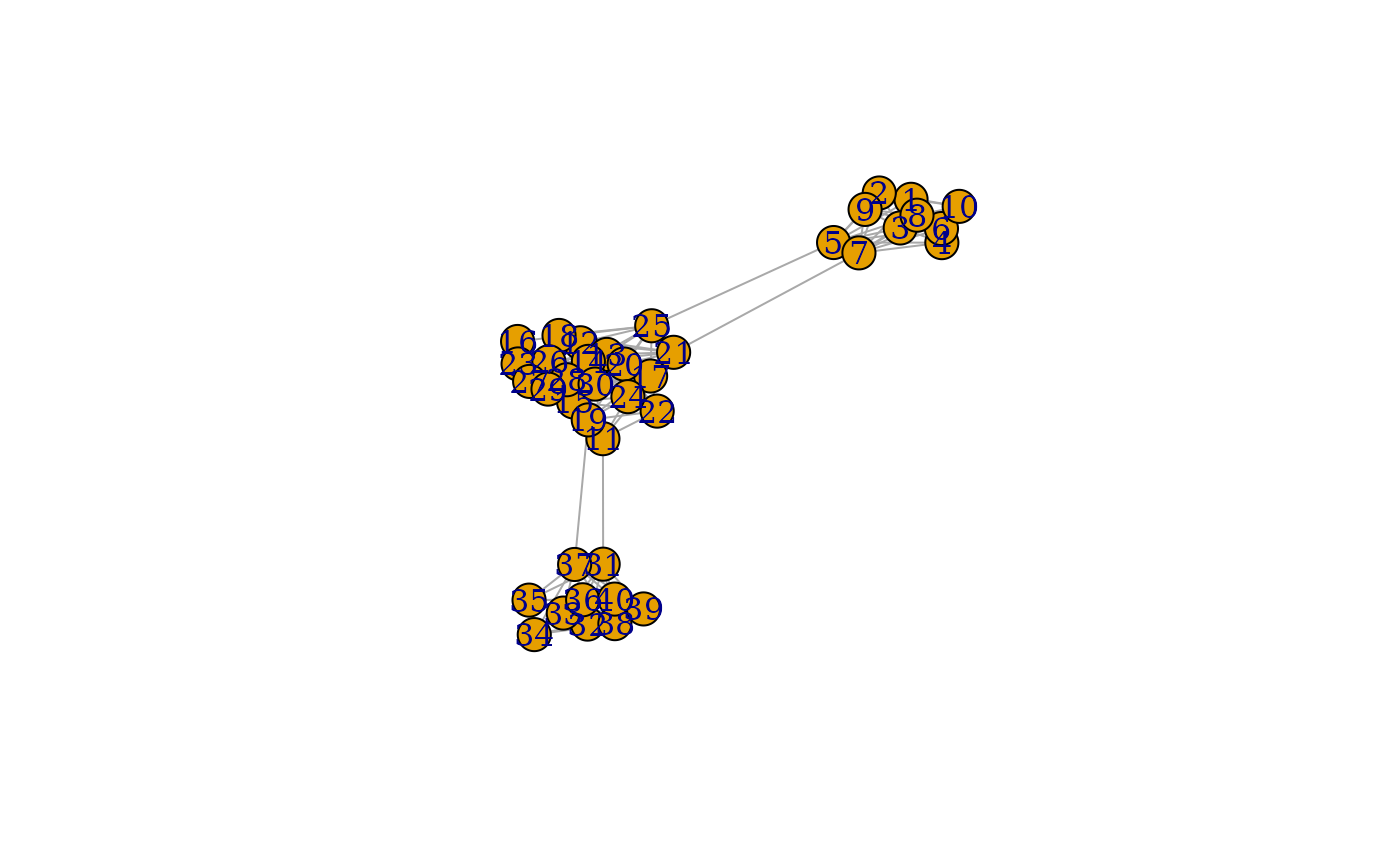Creates an example of a network from Peel's quintet of the specified type.
generate_peels_network( type, k_values = c(1000, 500, 100), single_component = TRUE )
Arguments
| type | A character which is any of the capital letters A-E |
|---|---|
| k_values | An integer vector. The spring constant for the edge types within sub class, within class but not sub-class, between classes. The default value is 1000, 500, 100. This means the strongest connection is for nodes in the same sub-class and the weakest connection is for nodes in different classes |
| single_component | Logical. Guarantees a single component network. Set to TRUE as default |
Value
An igraph object that matches one of the 5 Peel's quintet types. The nodes are labeled with class and sub class. The edges have attribute k which is the spring constant of the edge given relationship between the nodes the edge connects to
Details
This function generates networks matching the 5 types described in Peel et al 2019 (doi: 10.1073/pnas.1713019115 ). All networks have 40 nodes, 60 edges, two node classes and four node sub-classes. The connections between the are equal across all 5 types. As a result all networks generated have identical assortativity. However, as the sub-classes have different connection probability the structures produced by the networks are very different. When projected into SETSe space the network types occupy there own area, see Bourne 2020 (doi: 10.1007/s41109-020-00329-4 ) for details.
